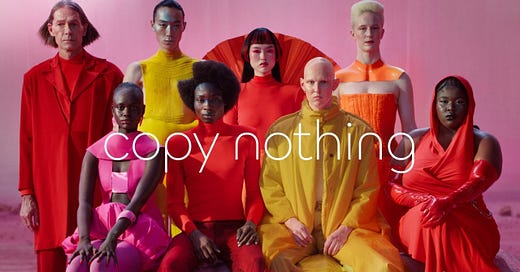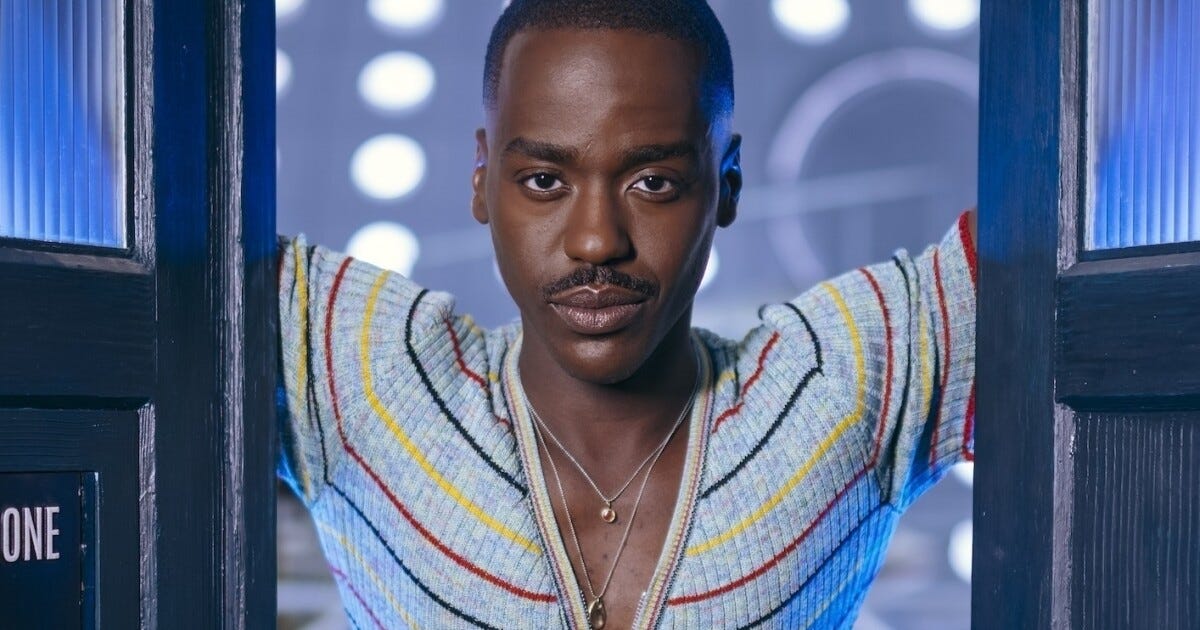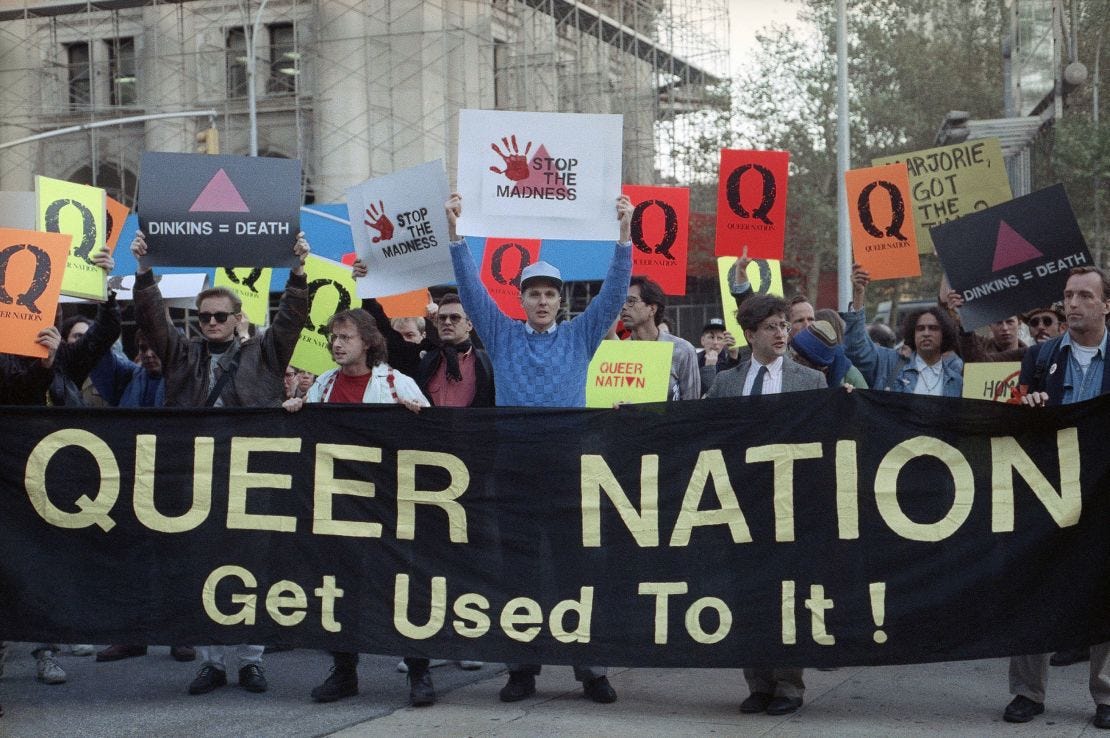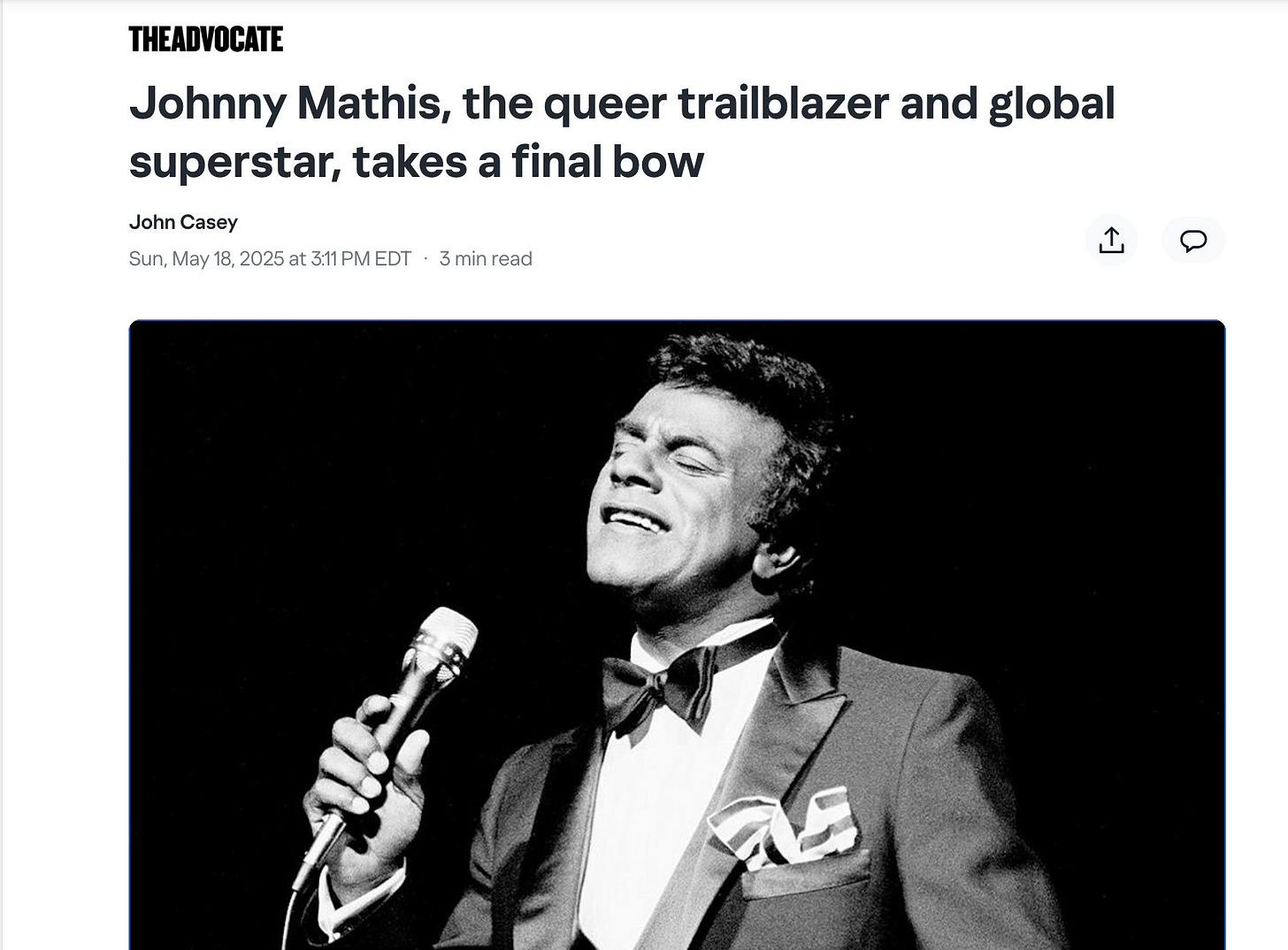I never talk about this, but I was among a select bunch of guys who auditioned for the original cast of Queer Eye For the Straight Guy in 2003. I was working in the beauty industry to support my acting habit, so I was looked at for the “Kyan” grooming guy spot. I agreed to audition, but wasn’t really keen. The whole idea of a group of queens who go around teaching dumb straight dudes how to dress and behave I found to be a tired cliché. Like the “Magical Negroes” trope, the stereotype of the gay eunuch who makes straight folks’ dreams come true via a stunning makeover has been done to death: Rupert Everett as Julia Roberts’ gay BFF in My Best Friend’s Wedding; Stanley Tucci playing fashion fairy godfather to Anne Hathaway in The Devil Wears Prada; drag makeup artiste Harvey Fierstein transforming Robin Williams into Mrs. Doubtfire. On top of that, I hated the word “queer” and its implications. Needless to say (and much to my chagrin later), I arrived at the audition with a less than enthusiastic attitude, which darkened as I attempted to engage in improv with the candidates for the other Fab Four, all of them trying so hard to be fierce that they nearly went into orbit. I didn’t get a callback.
The reason I bring this old anecdote up is because I’m feeling that sense of revulsion again as I survey what passes for gay culture nowadays. Fact is, it’s not gay, it’s queer. In the name of “inclusion,” media and the entertainment industry have gone queer crazy; for example, the “queering” of long established and beloved sci-fi franchises like Star Wars and Doctor Who. The world of advertising has waded into queer waters, too, offering us such choice oddities as the Jaguar campaign featuring a collection of colorfully attired, expressionless, queer cyborgs who seem to have wandered into the ad’s barren pink wasteland from the runway at some avant-garde Fashion Week in eastern Europe—but no cars. Jaguar felt compelled to announce that they’re “down with the queerness,” but they ain’t gonna sell no cars with this high style nothingness. For years, I’ve predicted that the more accepted gay people become in the mainstream, the more our special culture and style would be watered down, cheapened, made mundane and commercialized. I take no joy from having been right; but I didn’t quite anticipate a day when gay people would become so ubiquitous, cliché, overplayed, overbearing, crass and obnoxious. I never imagined that we’d go quite so “queer.”
I’m about fed up with the overuse and abuse of the term “queer” by those who purport to represent the LGBTQIA+ "community,” which, as an actual community, simply doesn’t exist. How could it? How could all these disparate groups of people—artificially lumped together by activists who assume the right to decree what the “community” is—possibly be in uniform agreement on one set of goals, agendas, beliefs and political views? And who gave the activist cabal the right to dictate new terms, words, and definitions, and impose them on all of us? I am more and more angry at the way the word “queer” has become the catch-all term for said “community.” No. What is the point of delineating all of these discrete identity groups (including “queer” by the way), giving each it’s own flag, if you’re just gonna refer to us all as “queer” anyway??
I’m a Gen X gay man and came out in 1984. At that time, with the AIDS crisis, the outing of closeted celebrities, and the uphill fight for equality, many of us participated in activism of various kinds. Some activist groups decided to take back the homophobic slur “queer” and own it—as a political act. In the 80s and 90s, organizations like Queer Nation used the term to define themselves as gays who were radically “out” (which you couldn’t be in those days, radically or otherwise). But many of us gay men were never taking on a word that had been thrown at us, an ugly and demeaning term that branded us as abnormal and twisted. A lot of us still feel that way about the word. I didn’t adopt “queer” back then any more than I started wearing the pink triangle—the symbol gay victims of the Holocaust were required to wear—which was worn in defiance by some radical activists at the time. As a Jew I wouldn’t wear the yellow star, so the pink triangle was a no for me.
These days anybody can be “queer,” and for some reason, the “community” wants to push that idea. I was appalled when I read a recent article in The Advocate about legendary singer Johnny Mathis’s farewell concert tour, bearing a headline describing him as "a queer trailblazer.” Johnny Mathis was targeted, as many closeted gay celebrities were, in the 80s by activist groups who wanted to force them to come out, despite the devastating consequences they might face for doing so. In the article I mentioned, Mathis is interviewed about that time, and he describes how dangerous it was to even hint that one was gay. It wouldn’t be until 2021 that Mathis would speak openly about his homosexuality. And even then, he preferred to put the focus on his music and accomplishments rather than his sexuality, which to him is just a fact of who he is—he certainly didn’t identify himself as “queer.” In the Advocate piece he says, "I've come to the realization at this age that my sexuality is always going to be a source of interest because I'm a public figure, and I just thank God that society has changed and that being gay is not such a big deal anymore and that society is more accepting."
I very much doubt Johnny Mathis would define himself as a “queer” anything, and it’s presumptuous to refer to him as such; indeed, it’s incredibly presumptuous for certain “community” organizers and influencers to push “queer” as the umbrella term—yet another massive generalization that all of us are just supposed to accept. As a theatre person I bristle when I see Shakespeare, Wilde, even Williams described as “queer” playwrights. None of these men would have identified as such, I guarantee you. To label them “queer” today is akin to the Mormons trying to posthumously convert Anne Frank. I’ve performed theatre that might be considered “queer,” such as the works of Charles Ludlam. His brilliant Ridiculous Theatrical Company’s satirical gender-bending productions might reasonably be described as “queer.” But Ludlam’s not here to tell us.
I realize that my rant here will be interpreted as the grumbling of an out-of-touch old curmudgeon trying to “yuck the young ‘uns yum.” Au contraire. The kids are entitled to have their own culture and ways of expressing themselves. But they are not entitled to dominate and deconstruct, especially if they’re doing their “disrupting” and redefining from a place of ignorance about what came before them, and a blank dismissal of any point of view that isn’t in lock step with their own. “Queer” today is a pose or a style; a set of mannerisms and catch phrases—YASS QUEEN SLAY—that anyone, gay, straight, other—can imitate and affect, trying to “identify” as fascinating, subversive, or shocking.
Now, before you start leveling accusations at me of internalized homophobia, let me be clear: I say all this as one who would absolutely be considered obviously gay. I exhibit many of the classic attributes. Whether these are nature or nurture is for others more qualified than I to investigate. I’m comfortable with who I am—and sometimes, who I am is a bit camp. However: gay isn’t a personality. It’s a sexual orientation. And many, if not most, gay men are really regular guys who don’t especially come off “that way.” Today’s lefty, gender curious, activist class have adopted the most clichéd tics and mannerisms of flamboyant gay men as the behavioral language of “queer,” as performed by people of all genders and sexual identities. There was a time in gay male culture where a gathering could handle one, maybe two of the most screaming of queens. Entertaining and delightful as they are, they take up a lot of room. Today, we have entire roomfuls of them. That’s not a culture, it’s an enhanced interrogation technique.
In another time, such exhibitionistic subversion, gender expression and outré style came from the hippies, who brought androgyny to new heights as the sexual revolution raged. Eventually along came the punks, who, along with mohawk hairstyles and in-your-face attitude, at least brought good music and club culture. The punk ethos was against anything conformist, commercial or inauthentic. Today’s crayola-haired “queer” tribe aren’t really contributing anything—they’re too busy copying each other whilst living life in selfie mode, chasing “likes.” Queer expression today seems also to require the adoption of one form of drag or another.
I have a bit of a raised eyebrow for today’s “queer” pop icons, like Chappell Roan. As undeniably talented as she (they?) are, she (they?) are a white girl whose gimmick is adopting the stage persona of a drag queen. Um… Gotta say, to this old queen, who was, for a decade, a leading female impersonator in NYC, a drag queen is a gay man performing in a female persona. What Ms. Roan is doing is like blackface or yellowface; to me this is gayface. Of course feminists have, for decades, railed at drag as misogyny. Nevertheless, in my view, in order for a girl to play at being a drag queen, she has to first culturally appropriate a gay men’s art form, then cosplay as a flamboyant gay man in drag…which, I dunno, seems a touch offensive to me. I mentioned this to a young person I was working with recently, and in defense of Ms. Roan, they asked, “Yeah, but what if she identifies as queer?”
Yeah, no. Rachel Dolezal identified as black; that didn’t make her black. Listen—there is an actual gay male culture, with a long history and legacy of literature, art, aesthetics, innovation, style and thought. Drag has long been one aspect of that culture. I’ve been fortunate to have been a part of it as a performer and writer. Gay men were, at one time, the arbiters of style and taste. These treasures of art and culture are to be shared, of course—discovered and interpreted by each succeeding generation. However, there’s inclusion, and there’s intrusion. The integrity of the legacy and culture of gay men mean a great deal to me, and I think they’re worth defending and preserving. If that makes me a privileged, cisgender gay white male gatekeeper, so be it.
You know, I heard once that the two businesses most in danger of extinction in our time are bookstores and gay bars. It’s probably true. People are ignorant as fuck, and a true gay culture is fast becoming impossible. Those pushing the “queering” of the culture need to go do their homework, learn their LGBT history, understand that some of us who are still on the planet (thank you very much) came through very different times in which we were faced with discrimination and existential crises that the young “queers” today cannot even imagine. Show some respect for, and recognition of, the actual diversity within this manufactured “community,” and honor our experiences and our views. Or at the very least, ask someone if they identify as “queer” before you start labelling them as such.










Thanks, James. I'm even older than you, a "boomer" who came out a decade before you, and your points ring true. I liked the concept of "queer nation" back in the day. I detest the "quirky" straight women today who dye their hair pink and call themselves "queer."
I thought your article was thoughtful and well written, though my reaction the your comment on women wearing “gay face” as feeling like ridicule to you, was that i have felt the same way about drag queens wearing “woman face”. I guess it’s in your perspective.